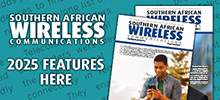05 May 2025
A new report from the International Telecommunication Union (ITU) highlights the persistent digital divide in sub-Saharan Africa. While mobile internet penetration has grown significantly since 2005, affordability remains a major obstacle.
The report reveals a concerning trend: entry-level mobile data plans (2GB per month) in sub-Saharan Africa cost a median of 3.9% of average monthly income per capita in 2024. This figure is the highest globally and substantially exceeds the UN Broadband Commission’s upper threshold of 2%. Similarly, fixed broadband (5GB per month) costs 3.4% of average monthly income. These high costs disproportionately affect low-income households, exacerbating existing digital inequalities.
Internet penetration in sub-Saharan Africa (38% in 2024) lags significantly behind the global average (68%). While the region has made progress, growing at an average of 16.7% per year since 2005 (compared to a global average of 8%), the past decade’s growth has been more moderate (10.7% annually vs. 6.1% globally).
The report underscores significant disparities in internet access across countries in the region, with rates ranging from a low of 11% in Burundi to a high of 87% in Seychelles. A gender digital divide also exists, with 43% of men accessing the internet in the past year compared to just 31% of women.
The report emphasizes a stark urban-rural digital divide. Urban internet usage in 2024 reached 57%, while only 23% of rural populations had access. This gap is the largest globally. 4G and 5G networks primarily serve urban populations, creating a connectivity deficit in rural areas, which rely on slower 3G or no access.







